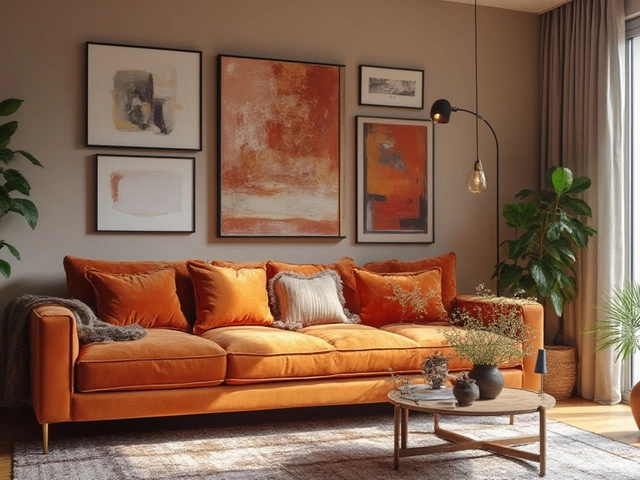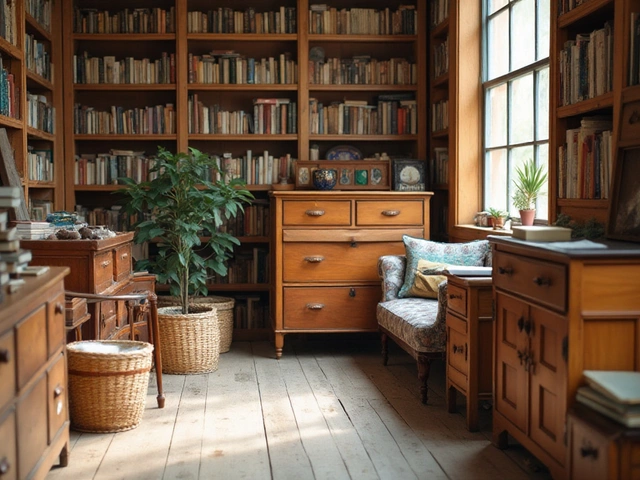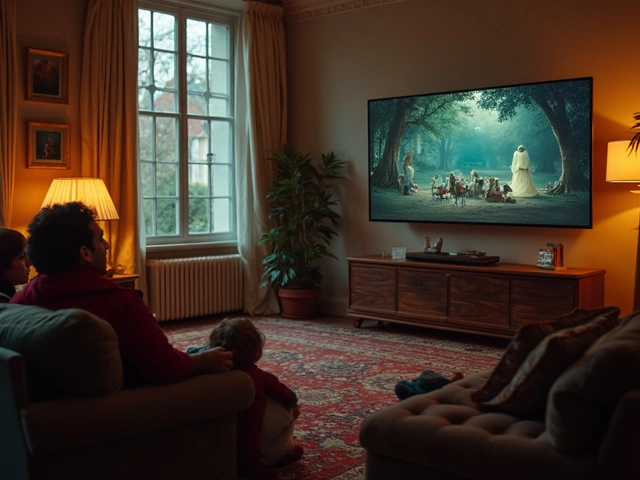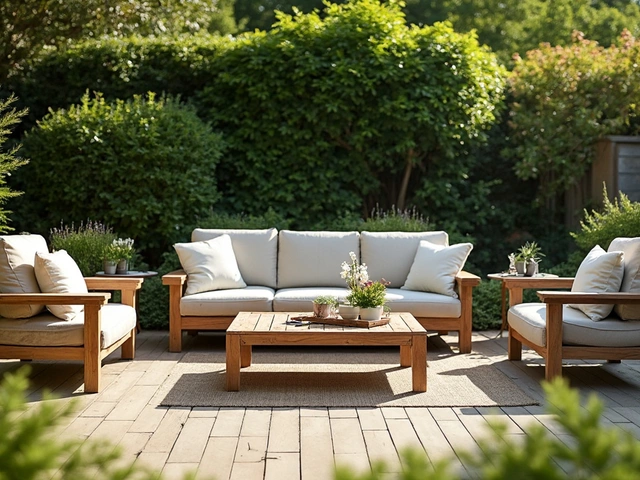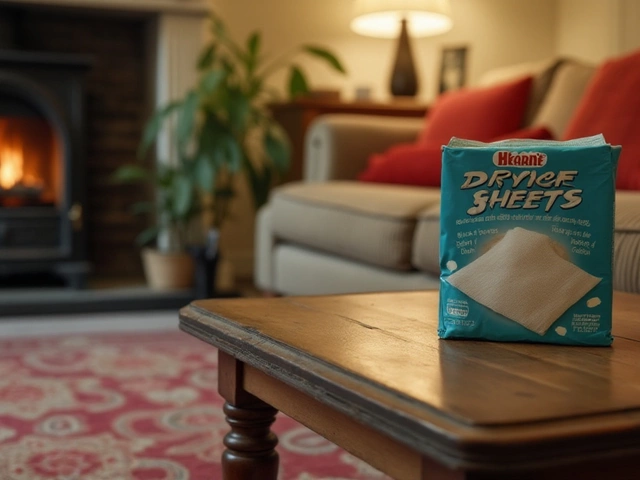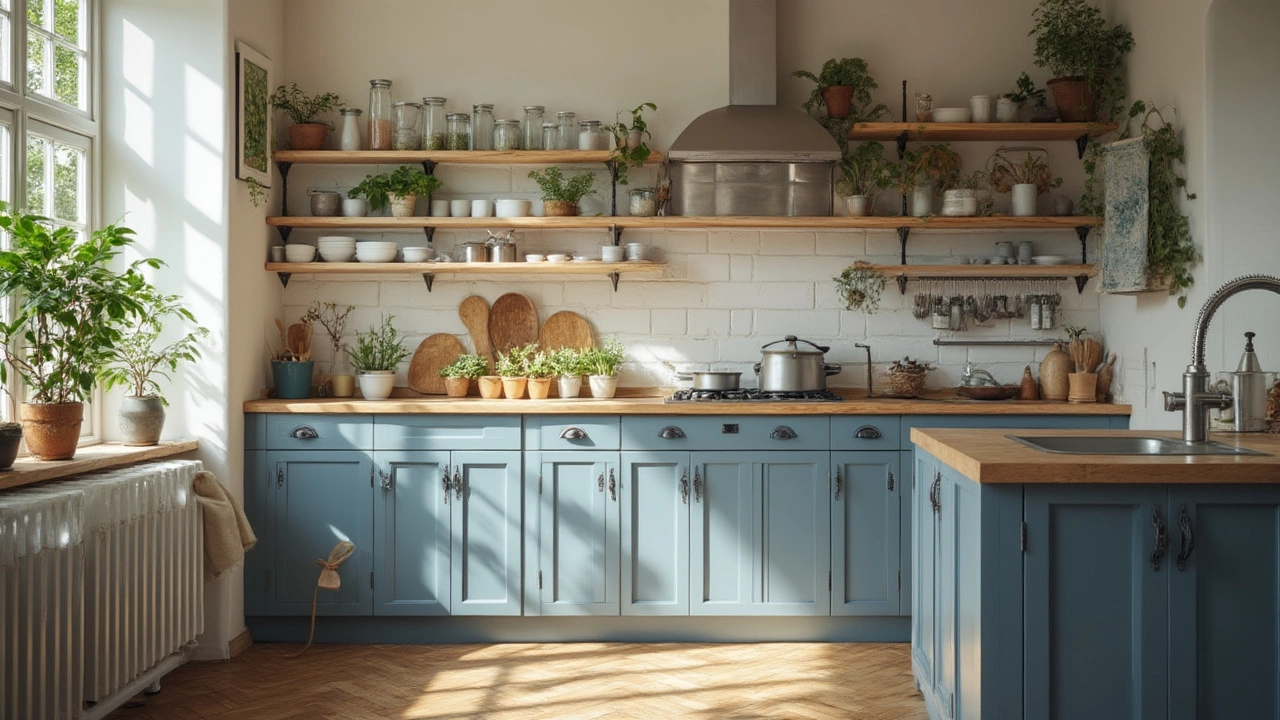 31
Jul,2025
31
Jul,2025
You walk into any stylish kitchen on Instagram, and chances are, those open shelves catch your eye first. Perfectly arranged bowls, stacks of cookbooks, maybe even a shiny copper pot or two. But is the open shelving look still fresh in 2025, or are homeowners quietly sliding their dishes behind cabinet doors again? Dark truth: open shelving has become almost a litmus test for how much calm you can handle—because it’s not a style for the faint of heart. There’s been an obvious fatigue creeping in, and it's not hard to see why.
The Rise (and Stress) of Open Shelving
Open shelving hit its stride over the last decade, championed by popular design shows and Pinterest-perfect kitchens. For a few years, people fell head-over-heels for its breezy, magazine-ready charm. It made small kitchens feel a bit bigger, and changed the rules about what a kitchen “should” look like. You could show off that collection of vintage mugs instead of hiding them. Suddenly, homes with open shelves felt warmer, more lived-in, less uptight.
But here’s what no one posted: open shelves demand a level of tidiness that wear on even the most organized people. Dust? Always. Grease from the stove? It lands on your favorite plates. And the pressure to style those shelves just right—one misstep and you’ve got a cluttered mess or a sparse, awkward gap. According to a recent 2024 poll by Apartment Therapy, nearly 40% of homeowners who tried open shelving in their kitchens said they’d go back to cabinets if they could. That’s not a small number considering how many magazine spreads make it look effortless.
Another thing: not all kitchens are created equal. In smaller city apartments (think New York, London), cabinets still win for sheer storage space and hiding power. If your kitchen sees a ton of action, it might be smarter to stow away mismatched plastic containers rather than try to style around them. And for folks with pets or young kids, open shelves can turn into a daily headache—tiny hands or tails love to swipe things off those lower shelves.
Yet, some of the love lingers. Open shelving can turn a kitchen into a statement room, showing off personality and color. Done right, it pairs well with other trends, like reclaimed wood, terra cotta, and matte black hardware. The trick? Being honest about your lifestyle. A minimalist who owns a dozen pristine dishes might love open shelves. Someone whose idea of cooking is “as quickly as possible” won’t.
Last thing: no matter what’s trending, open shelving does force a ruthless curation. You start asking: Do I really need eight mugs? Why do I own three whisks? Clutter drops, and your current favorites get prime real estate. But the stress of constant styling and cleaning can start to outweigh the beauty. By 2025, a lot of people have gotten wise to the tradeoff.
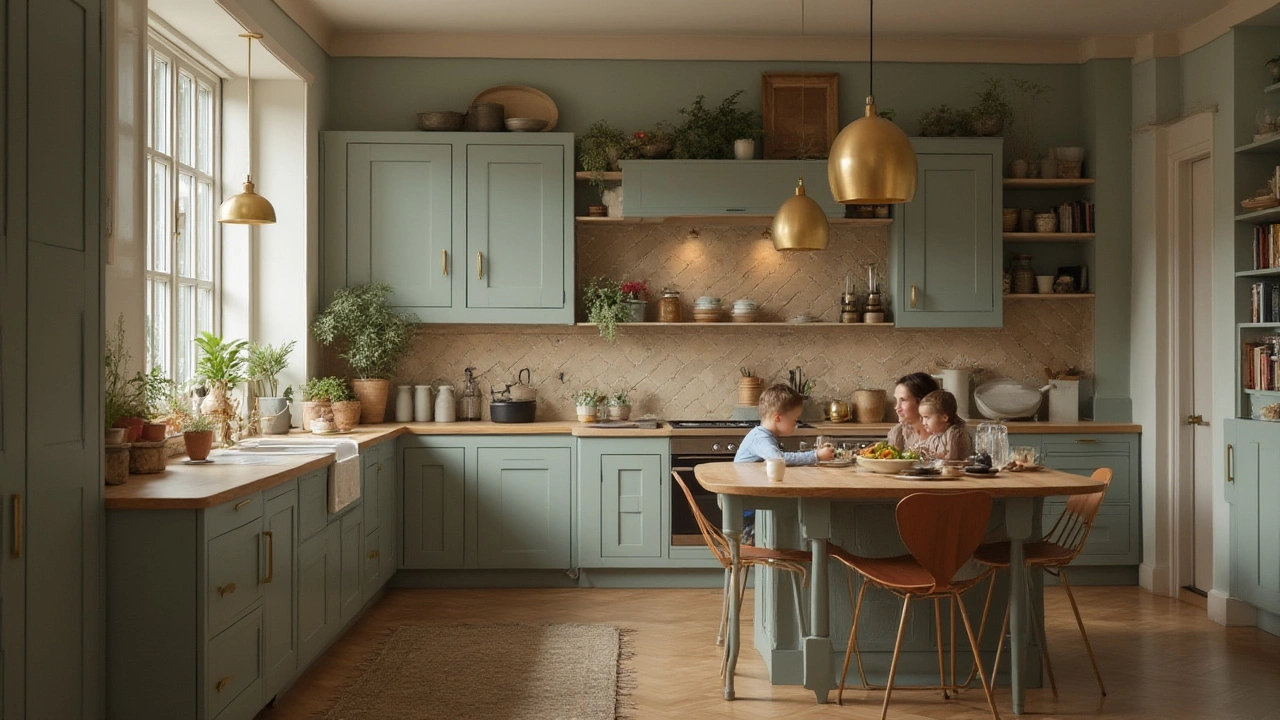
What Designers Say: The Shift to Function and Balance
So, are designers really ditching open shelves entirely? Not quite. If you ask a kitchen designer in 2025, many will say that it’s evolving, not disappearing. While the pure “shelf everything” trend has faded, designers are getting more strategic. Think: a single row of open shelves above the coffee station, or one wide shelf to display heirlooms, with closed cabinets everywhere else.
The National Kitchen & Bath Association’s 2025 survey found that only 15% of kitchen renos now go full open-shelf, down from 37% just five years ago. Instead, people are mixing and matching. A row of closed cabinets holds the everyday stuff, while an open shelf is for décor and showing off that fancy Dutch oven. The whole point? Function first, style second. Jaclyn Peters, a Winnipeg-based interior designer, puts it bluntly: “No one wants to dust their pasta bowls every other day just to impress a neighbor.”
Another new twist: glass-front cabinets. They offer some visual openness, but keep out grease and dust. They’re showing up everywhere from hip Brooklyn apartments to newly built suburban homes—especially for families who want a lighter look without committing fully to open shelves. Designers now encourage using open shelving in just one or two places instead of over the whole kitchen, like near a window to lighten up the view, or flanking the vent hood above the stove.
Some kitchens are taking cues from traditional sculleries (tiny rooms where all the ugly but necessary kitchen storage used to hide). Modern homeowners embrace the idea: tuck messier stuff behind cabinet doors or even in a butler’s pantry, then keep shelves for a few choice pieces as “art.”
Earthy materials are still going strong. Raw wood shelves, either floating or with iron brackets, remain popular, but with a much more natural, toned-down look—gone are the ultra-bright whites and everything-matching perfect lines. People are after warmth and character, not perfection. Adding a shelf made from reclaimed barn wood or even concrete has become a way to add a one-off shelf for texture without buying into the whole trend. There’s a word for it: balance.
Lighting is the other secret weapon. LED strips underneath a shelf can give both function and drama—especially with open shelves tucked into dark corners. It’s not just about daylight anymore. The trend this year? Putting under-shelf lighting in tea stations, baking nooks, and bars for a little extra atmosphere.
The verdict from designers is clear: open shelving isn’t “out,” but it’s not taking over whole rooms. Instead, it’s settling comfortably into the kitchen arsenal—one shelf here or there, serving a purpose, not playing a starring role by default.
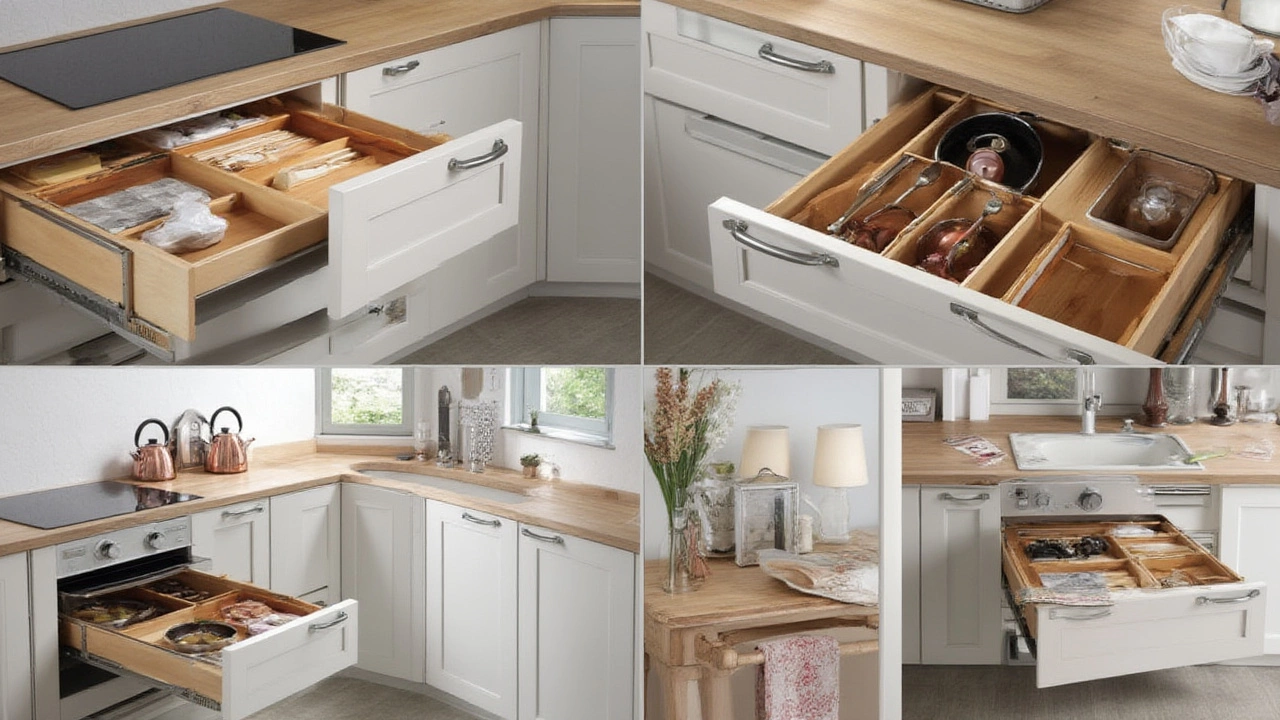
Real Life Tips: Making Open Shelving Work for You
If you’re eyeing those open shelves and thinking, “Maybe I could pull this off,” it’s totally doable—with a bit of strategy. Start small. Instead of tearing out every cabinet, try replacing just one upper cabinet with a couple of shelves. See how you like living with them before a full commitment.
Use your open shelves for things you reach for daily—plates, glasses, spices, or even houseplants. These items move enough that dust rarely builds up. Reserve closed cabinets for the chaotic stuff: Tupperware, kids’ cups, and all those random gadgets.
The golden rule? Keep it open shelving and not “clutter catch-all.” Edit, organize, and group items by color or material for a better look. Don’t line up 20 mismatched mugs unless you want your kitchen to look like a thrift store display. Instead, pick a simple color scheme, maybe blues and whites or clear glassware, and stick to it. Etsy sellers say nicely styled, sparse shelves make even weekday mug collections look intentional.
Cleaning is the trade-off for style. Schedule a wipe-down every week—it’s less work than it sounds, and saves you from the gross dust-grease build-up that kills the look. A soft microfiber cloth and mild spray do the trick without risking scratched wood or streaked glass.
Think beyond the kitchen, too. Some of the best uses of open shelving are in bathrooms (above the toilet with rolled white towels and a succulent), home offices (to keep files tidy and close at hand), or living rooms for books and collectibles. The visual lightness of shelves can open up even the tightest spaces—like hallway corners or narrow mudrooms. The secret is always to resist the urge to pack them full.
Worried about items tumbling off the edge? Simple fix: store big, sturdy pieces (mixing bowls, serving platters) on lower shelves, with lighter or decorative items (books, baskets, artwork) up top. Add baskets or boxes to corral smaller items. For kitchens in high-traffic areas, a thin rail or lip can keep fragile items safe from accidental bumps.
- Matching sets look cleaner but aren’t required—keep things that make you happy.
- Open shelves above a workspace can double as décor — add framed art, plants, or even a Bluetooth speaker for music while you cook.
- Experiment with height and spacing. Try two rows in one area, a single long shelf in another.
- Consider adjustable shelves. Some brands now sell moveable brackets you can reposition if your storage needs change.
Think of open shelving not as a full-on lifestyle, but a tool in your decorating bag. If you love fussing with design or want a constantly changing display, it’s a fun challenge. If your kitchen is chaos, or you’d rather spend time doing literally anything else, that’s totally normal—stick to cabinets, and maybe add one stylish shelf just for fun. No trend’s worth the extra stress.
